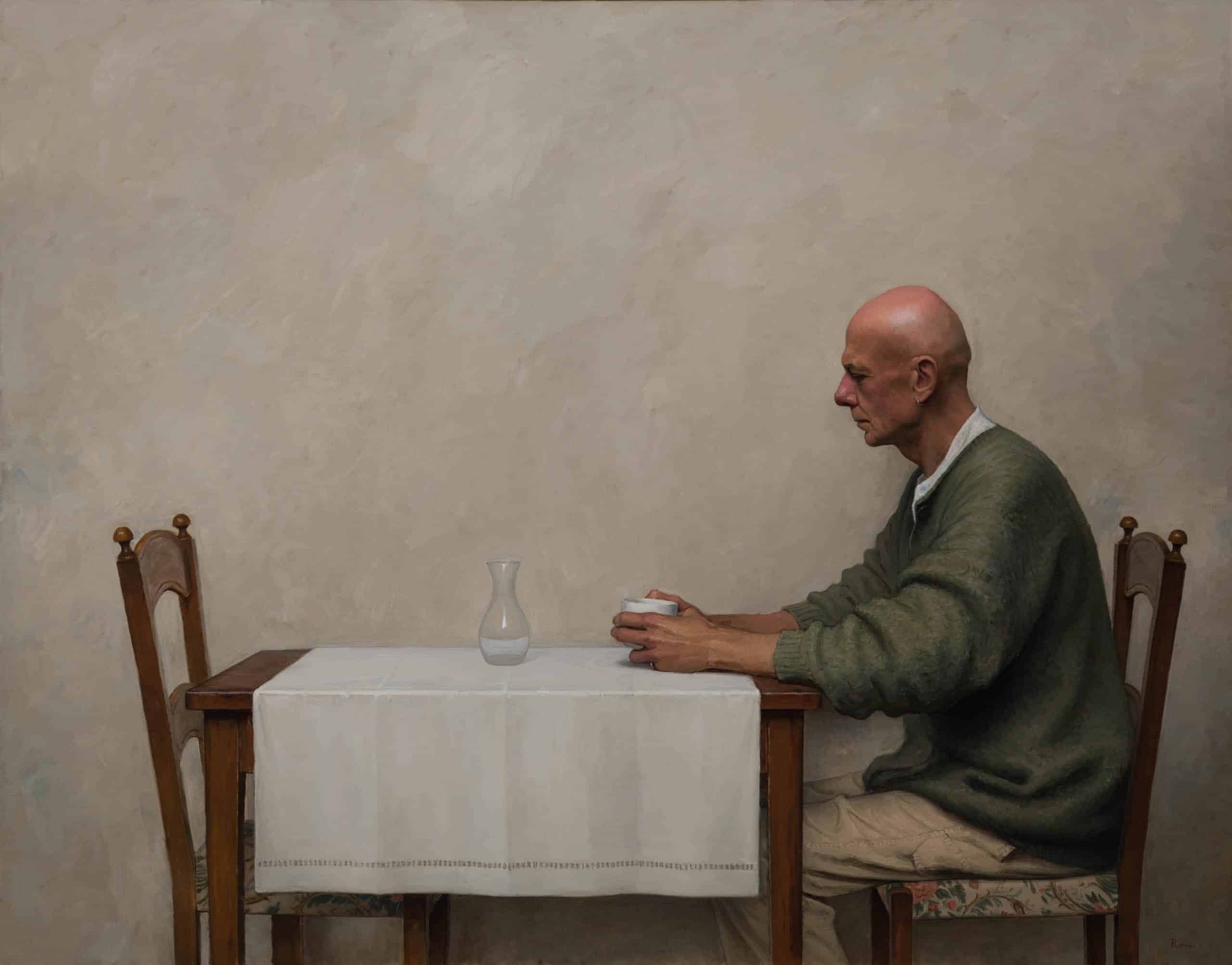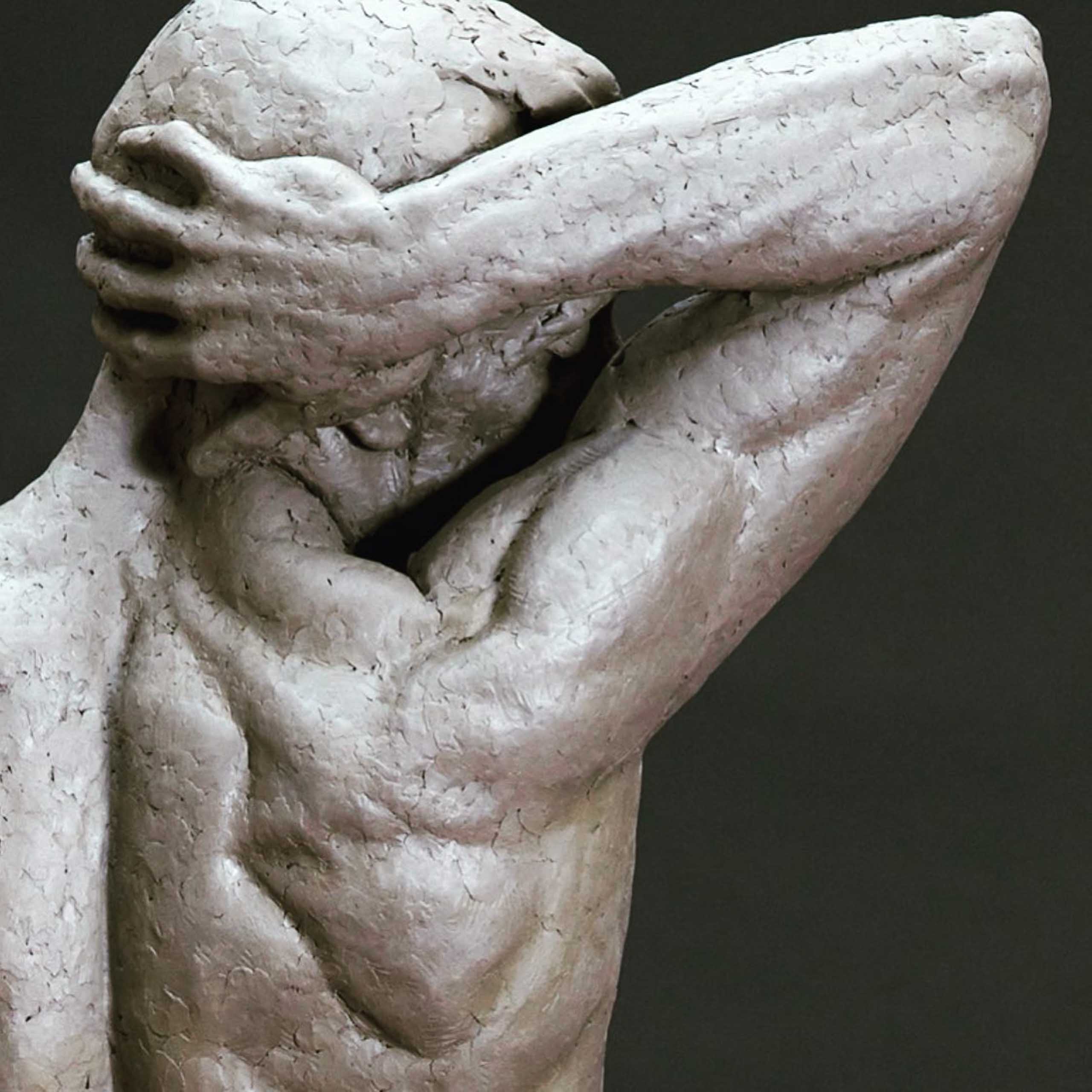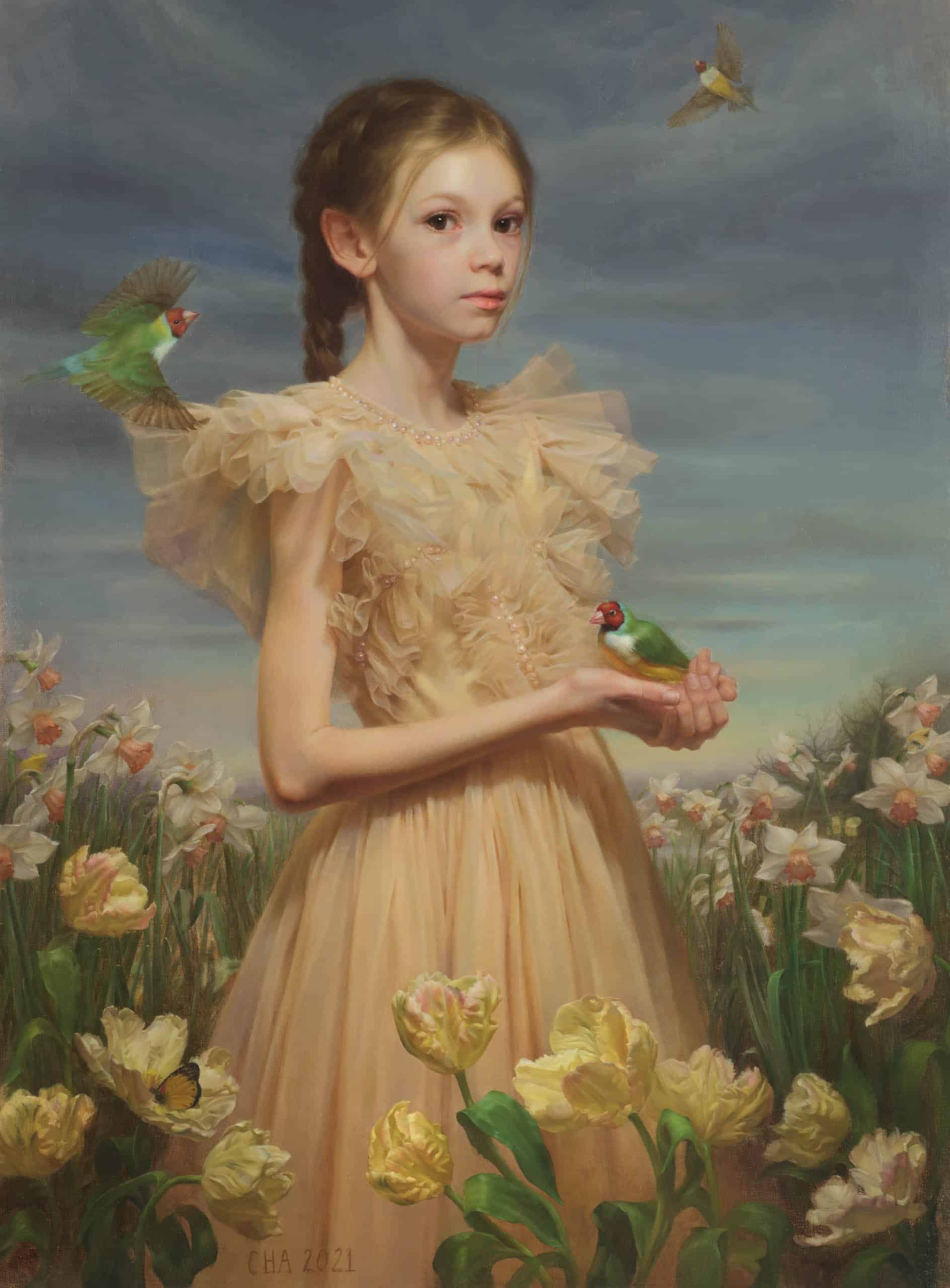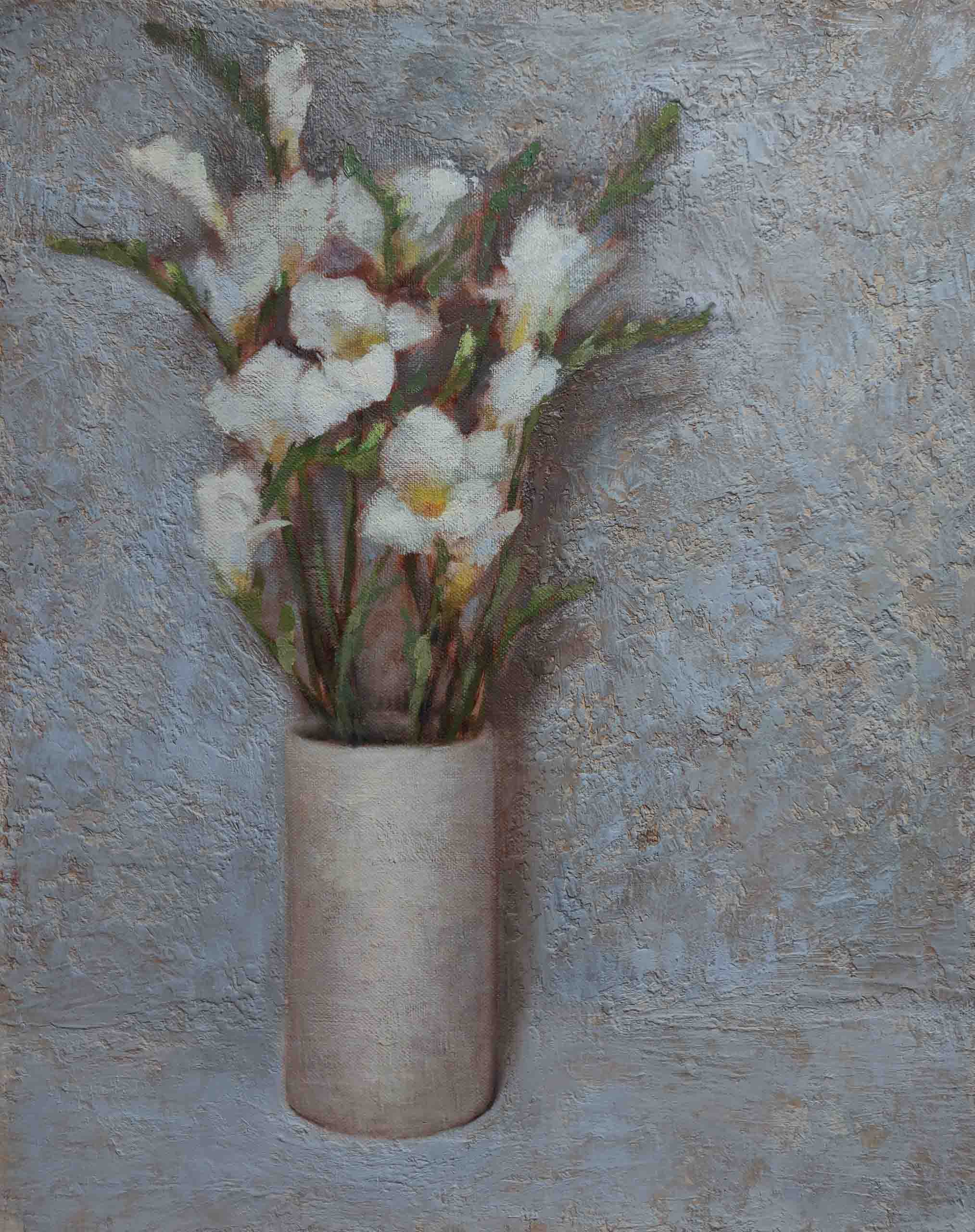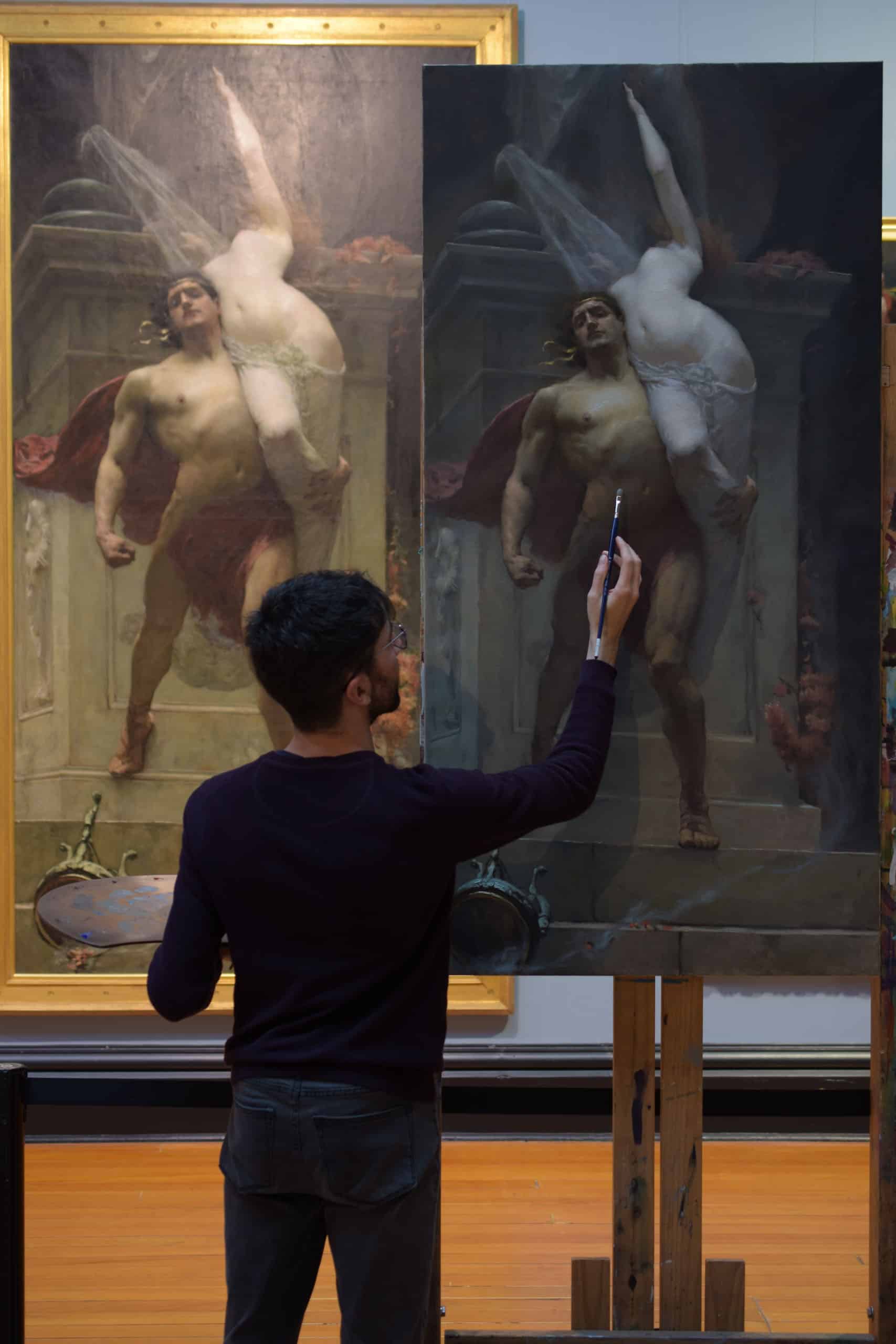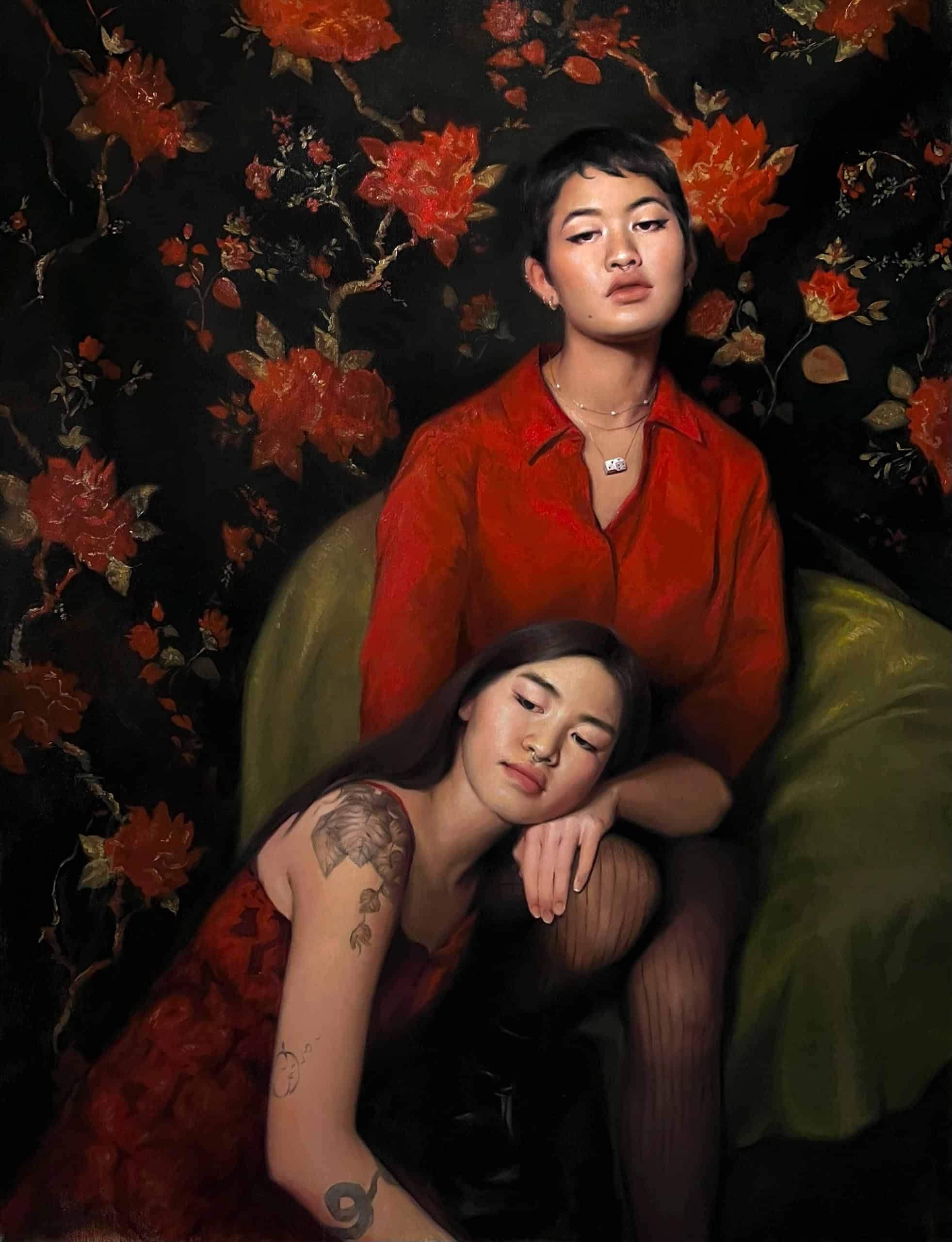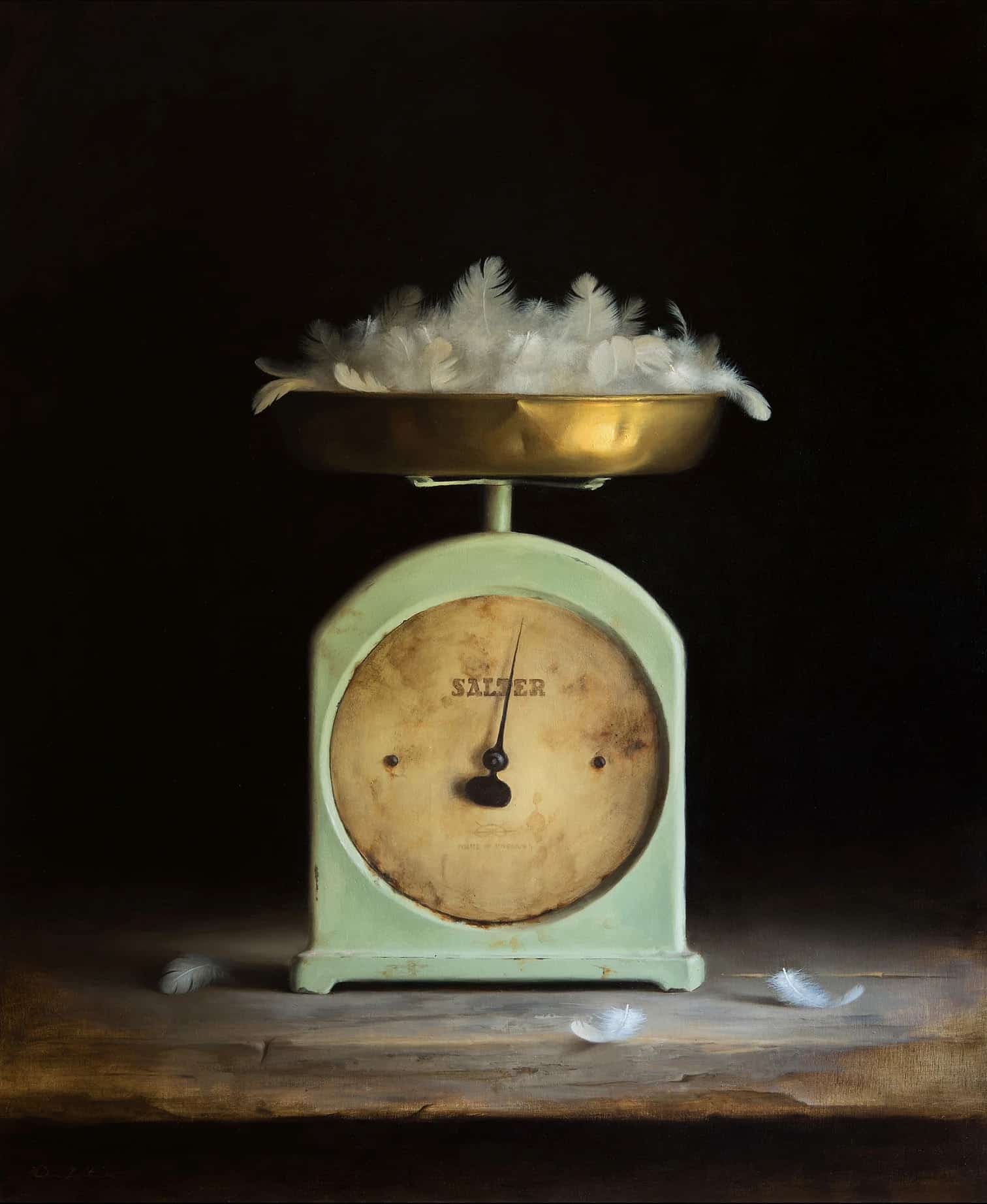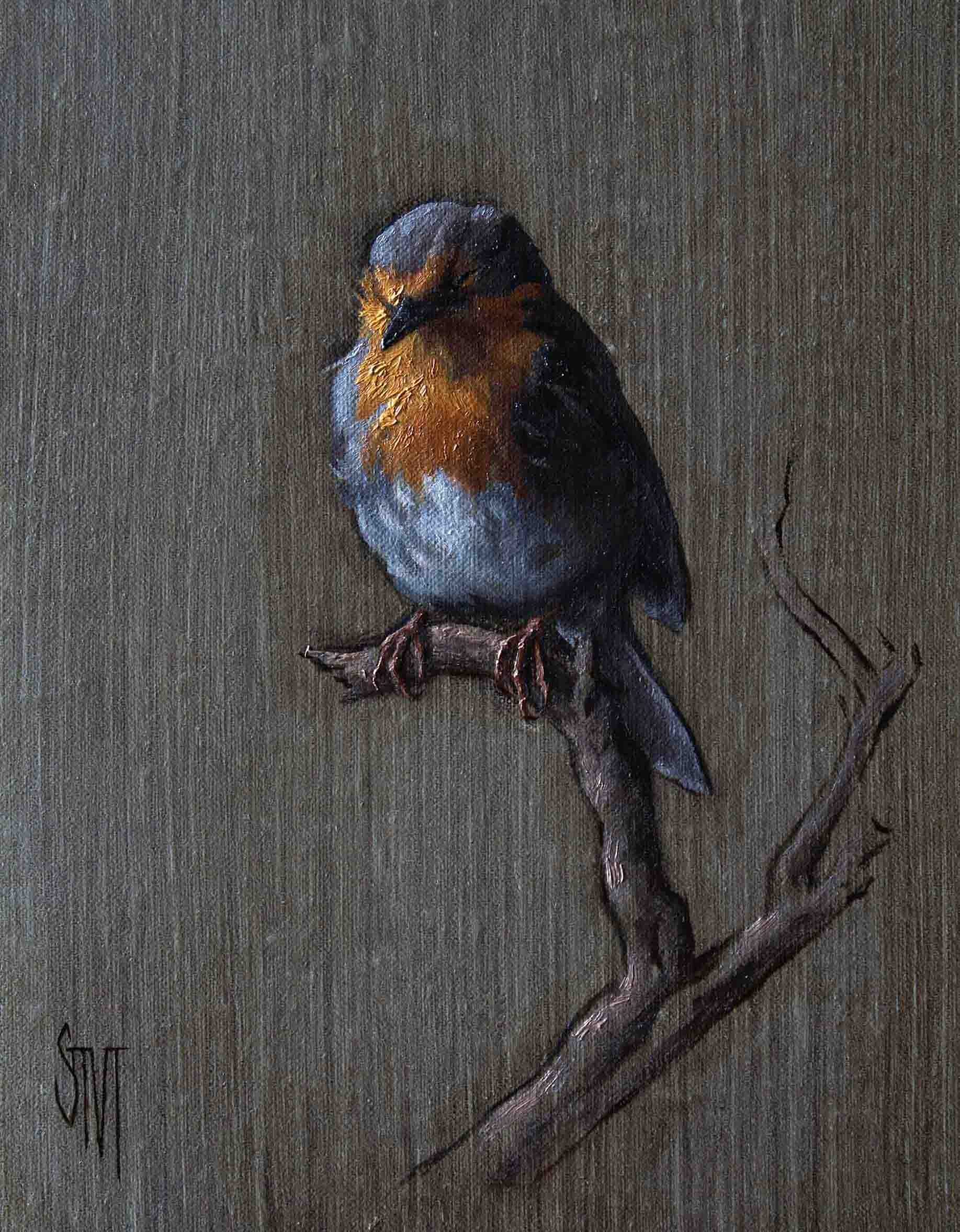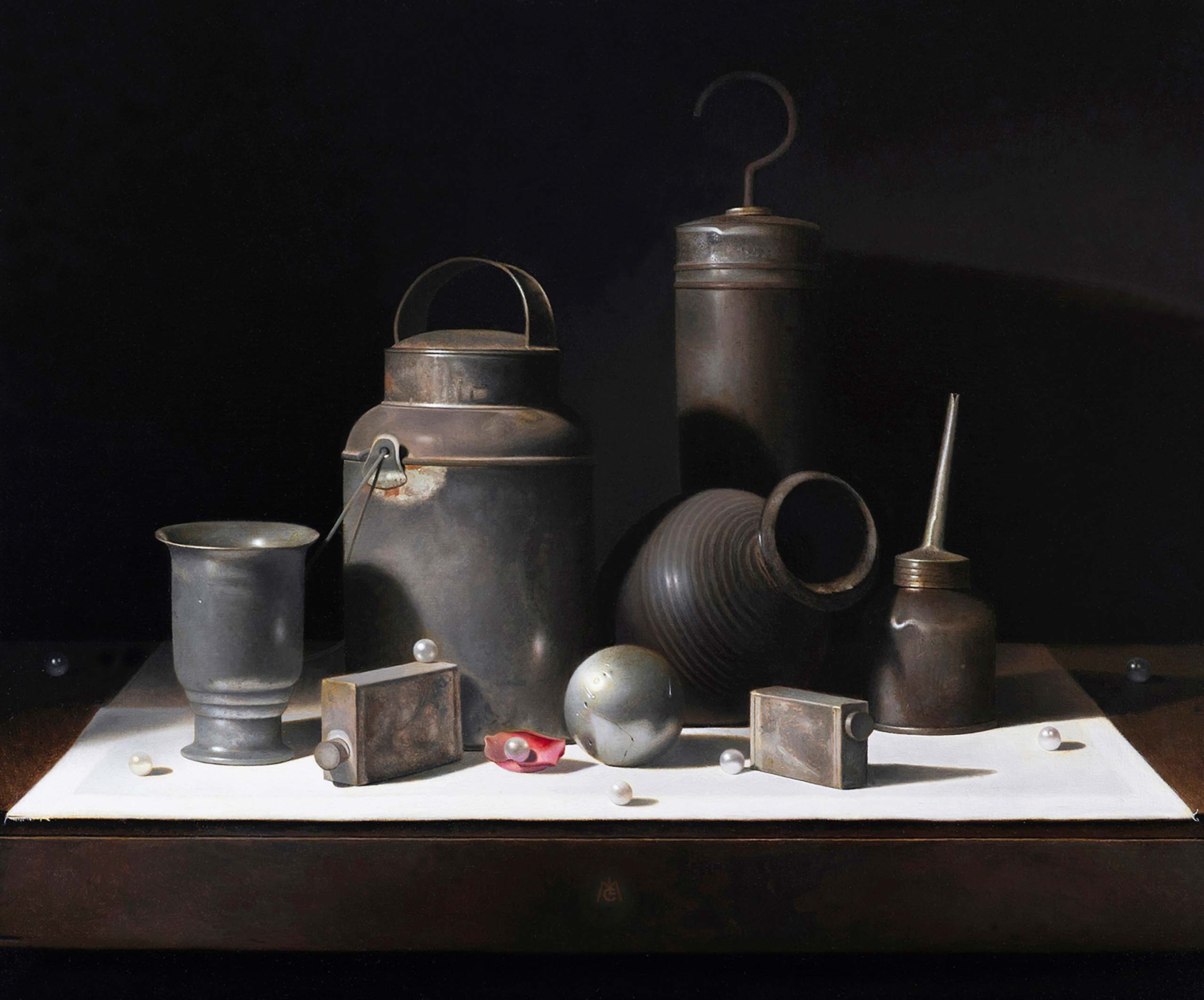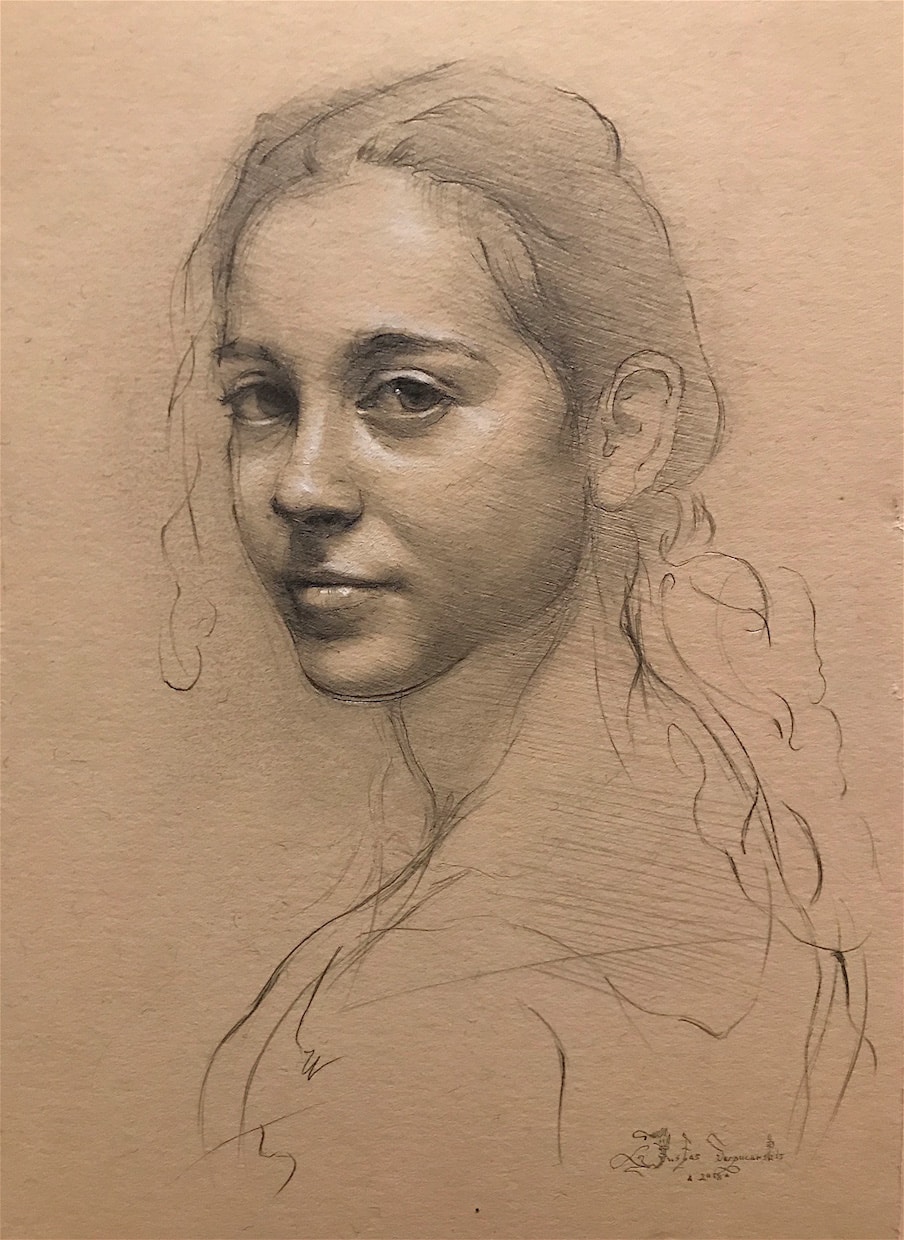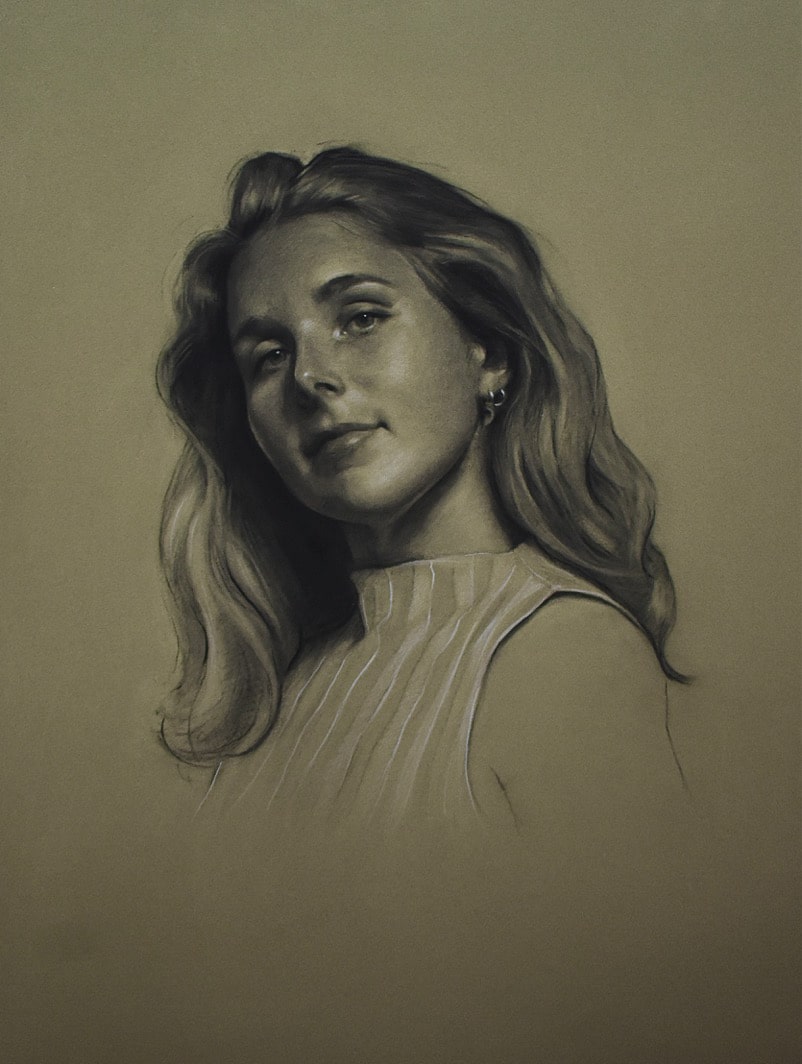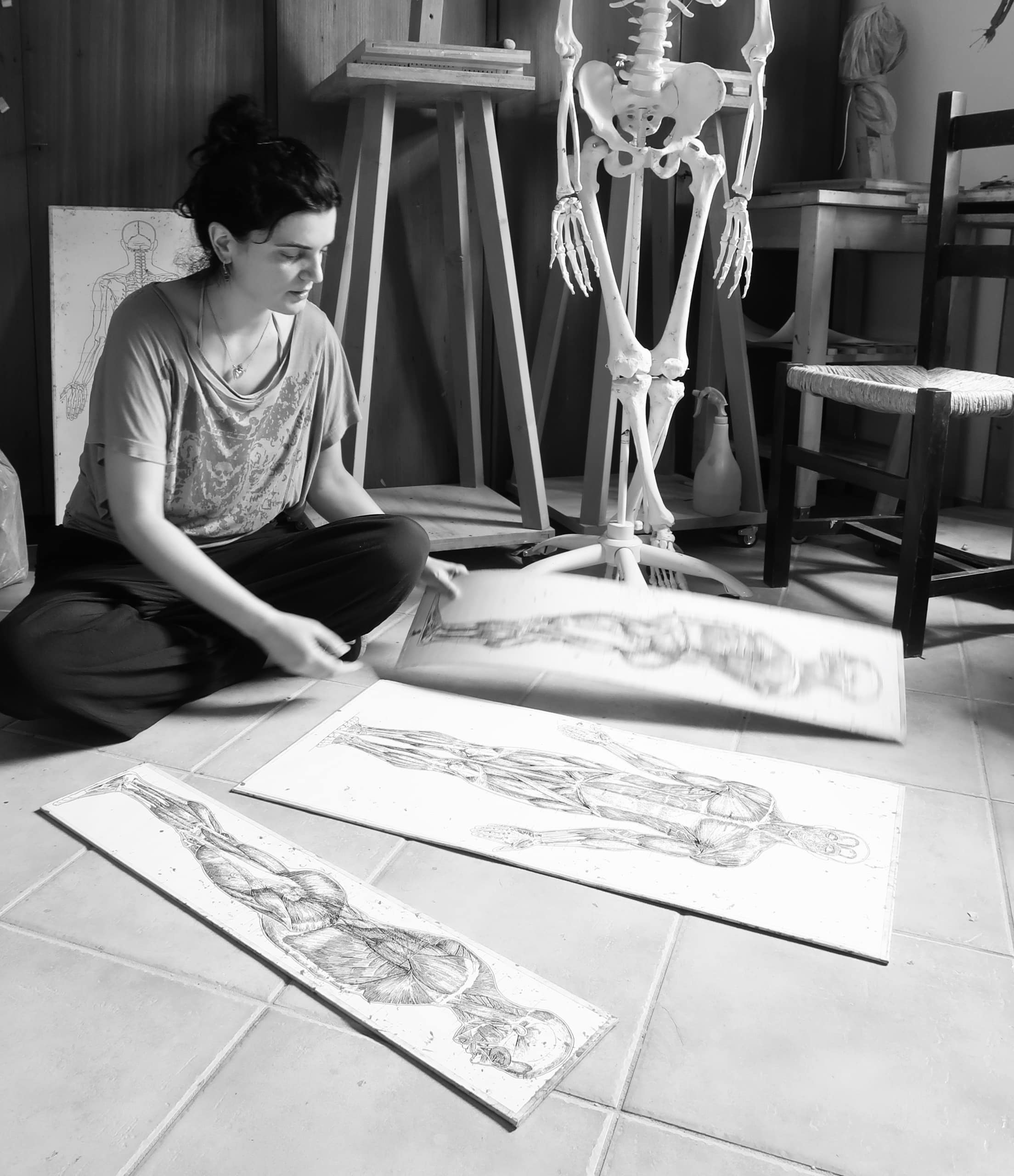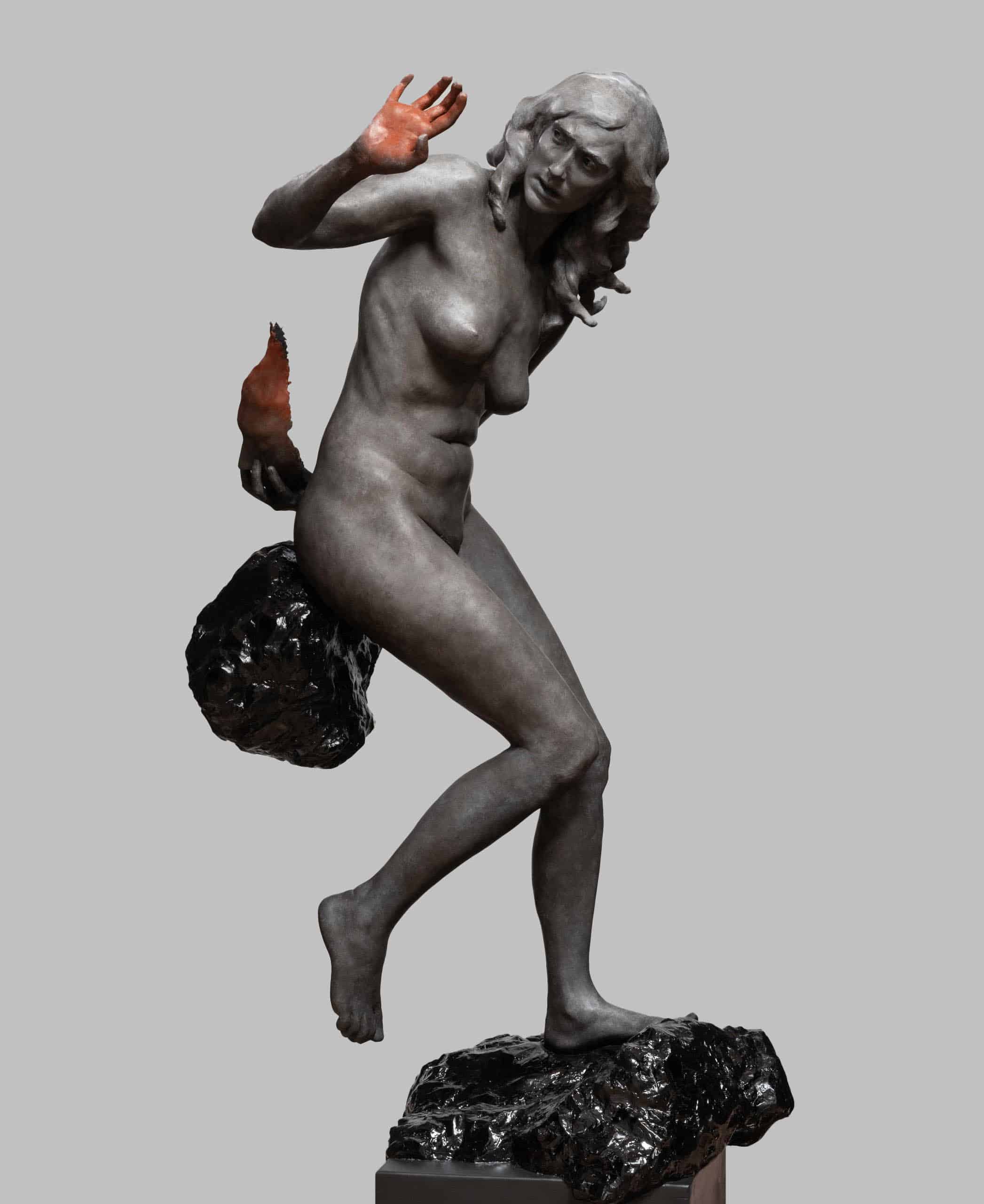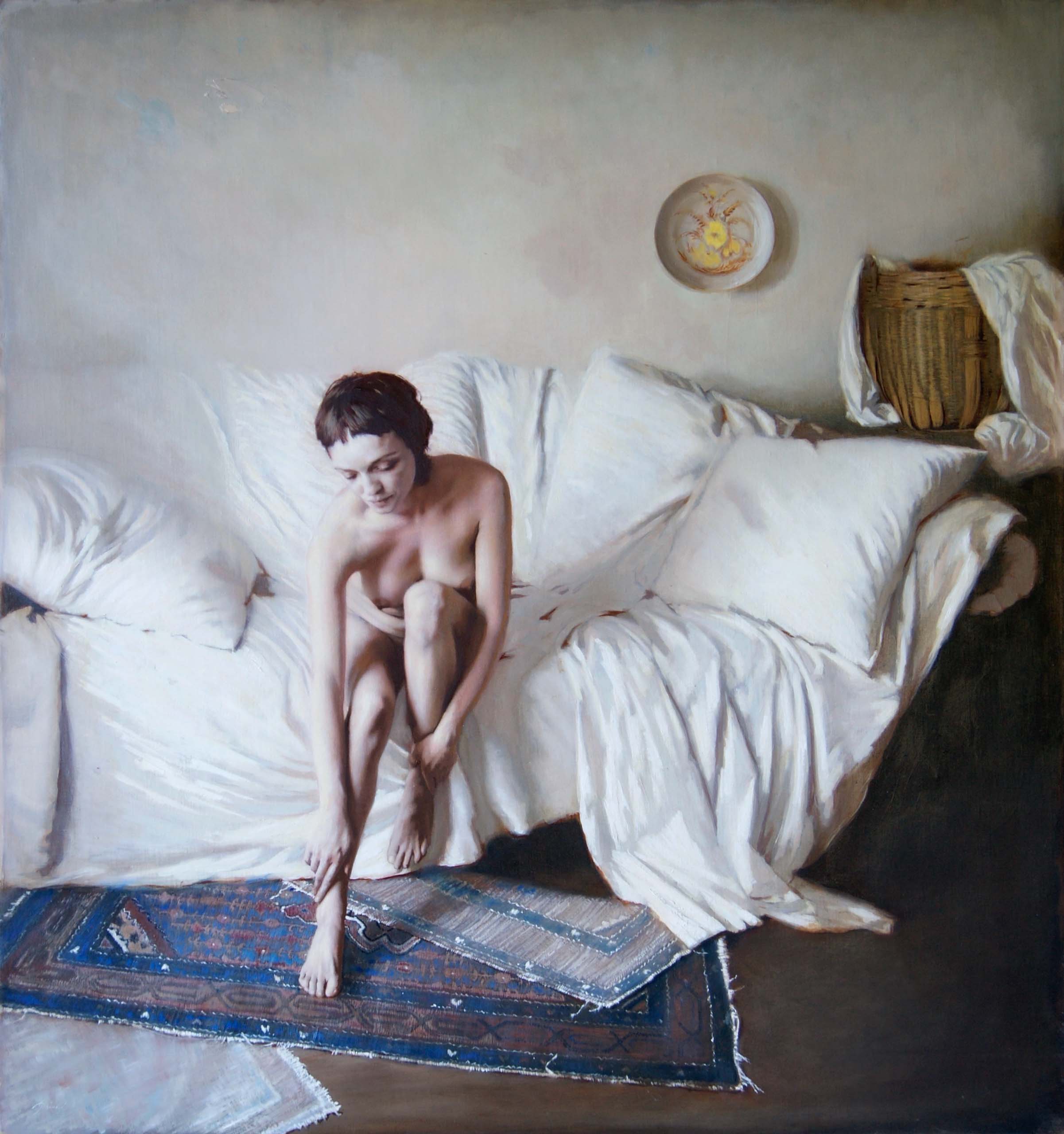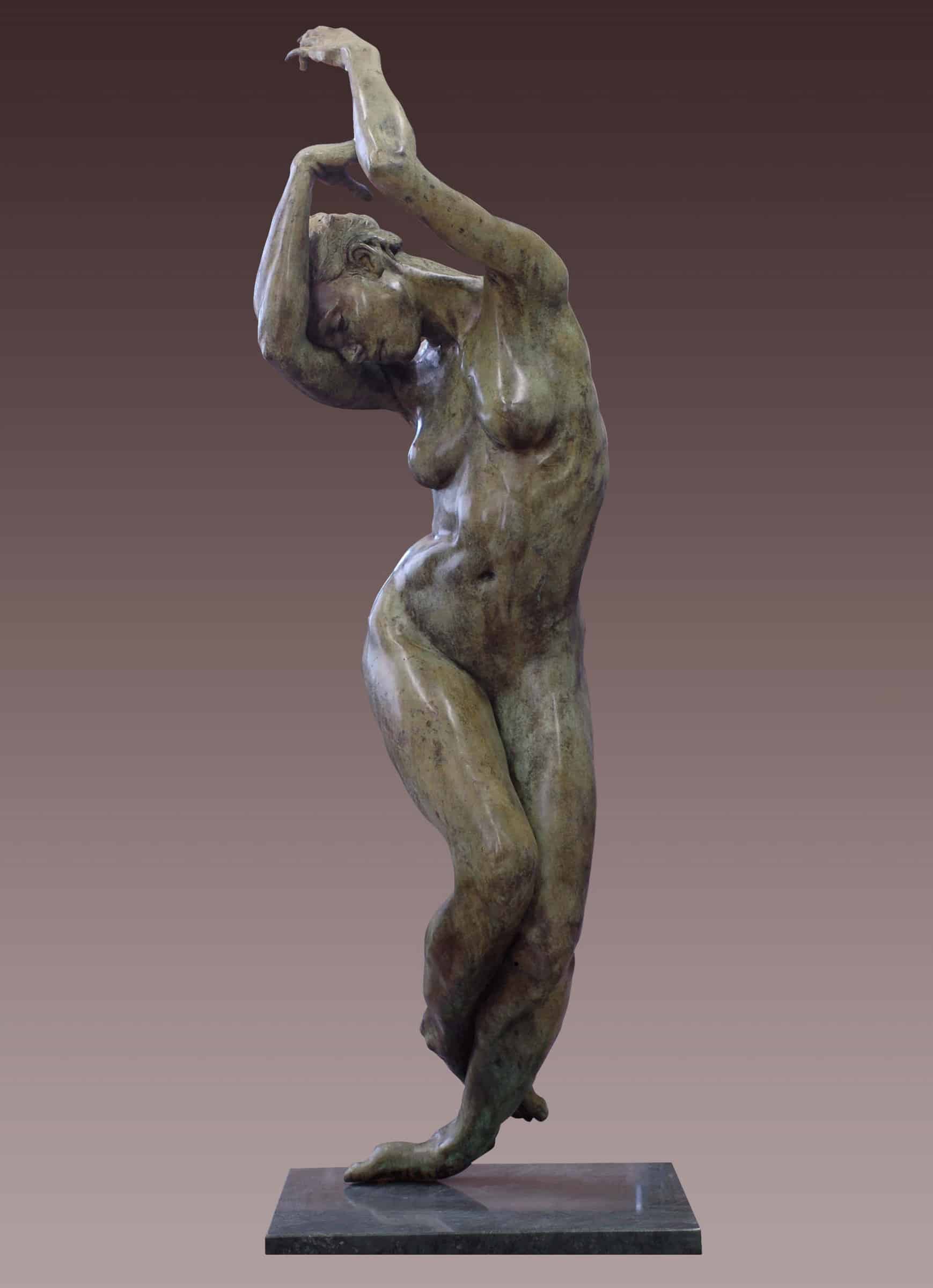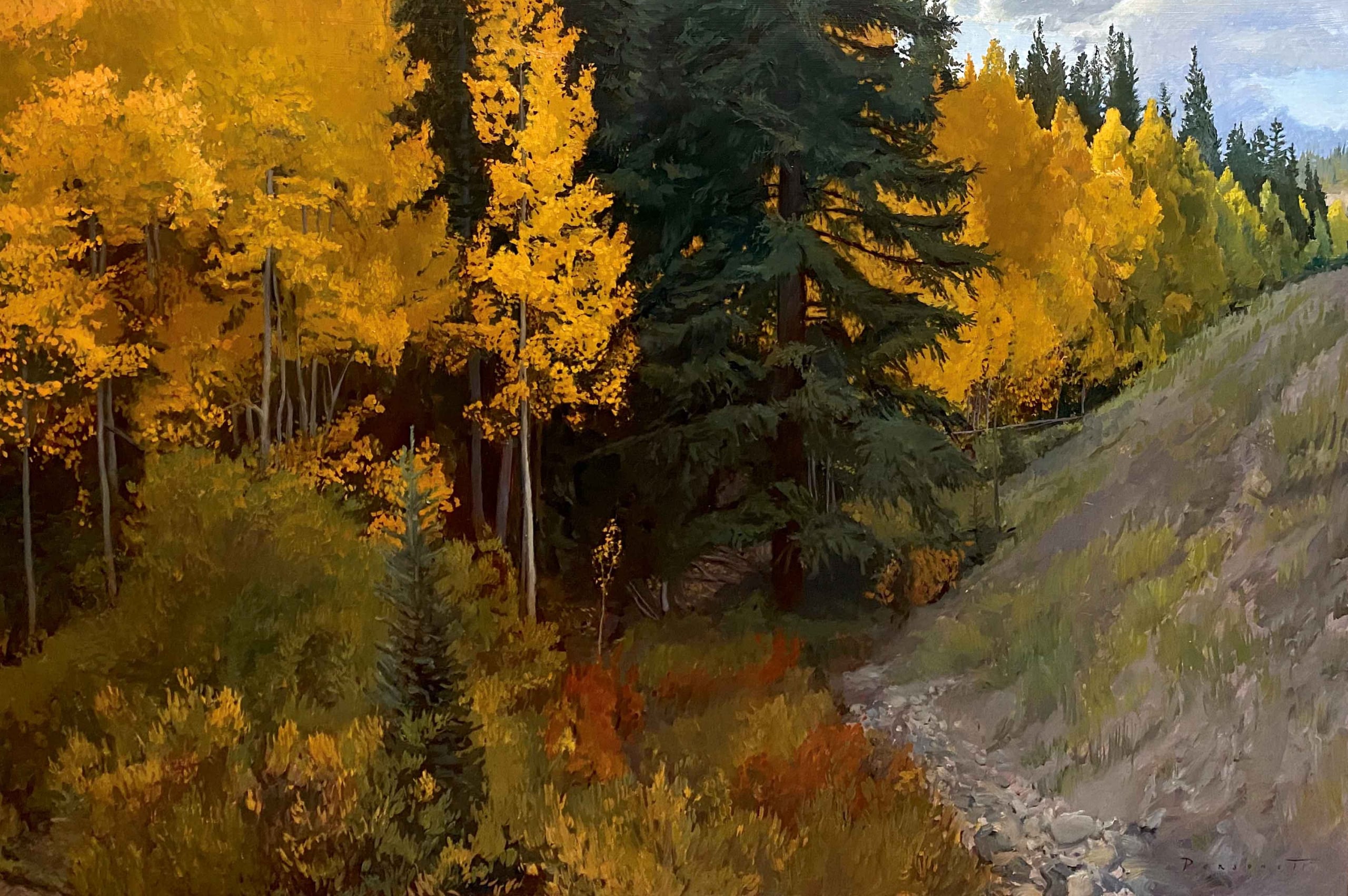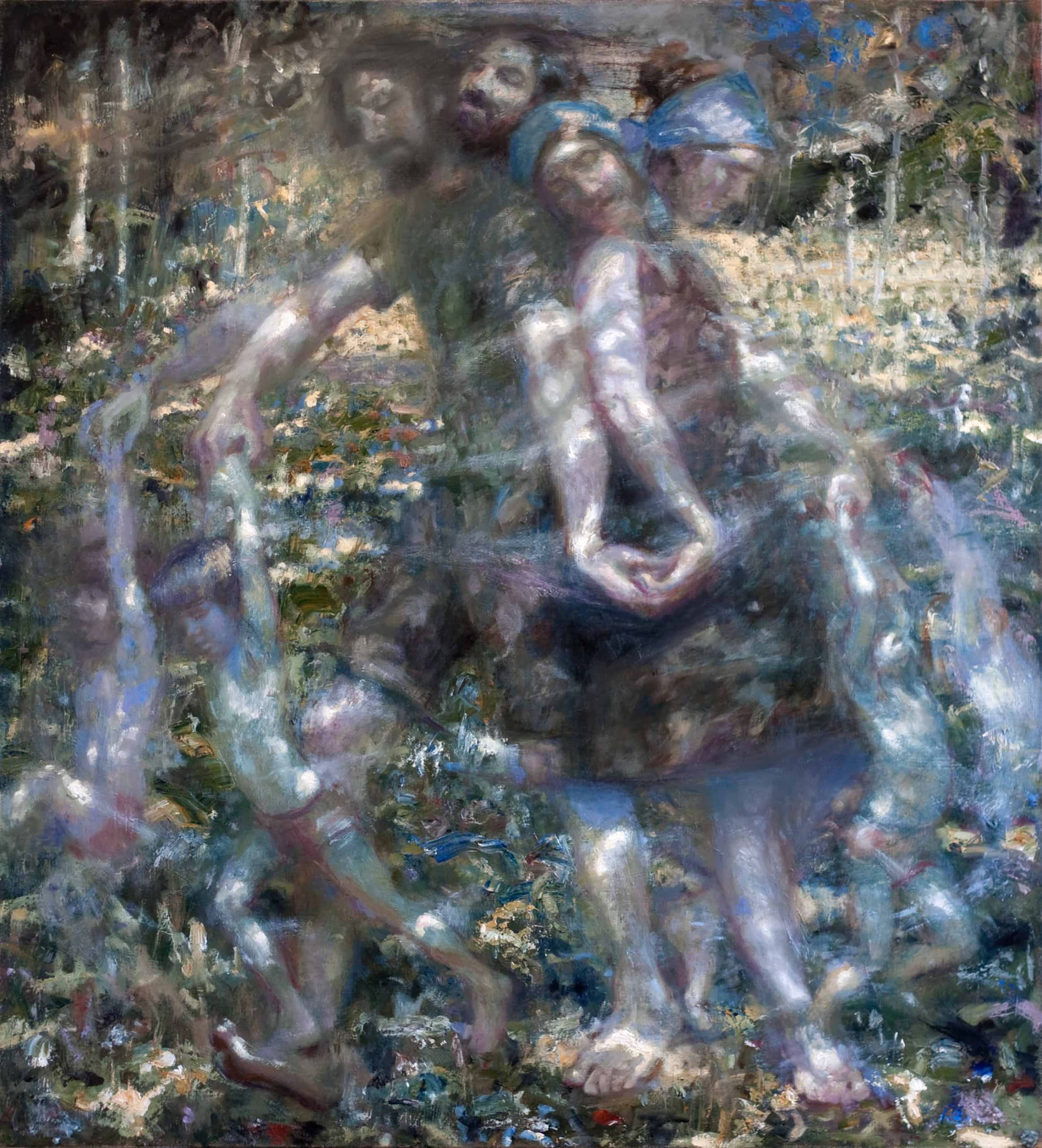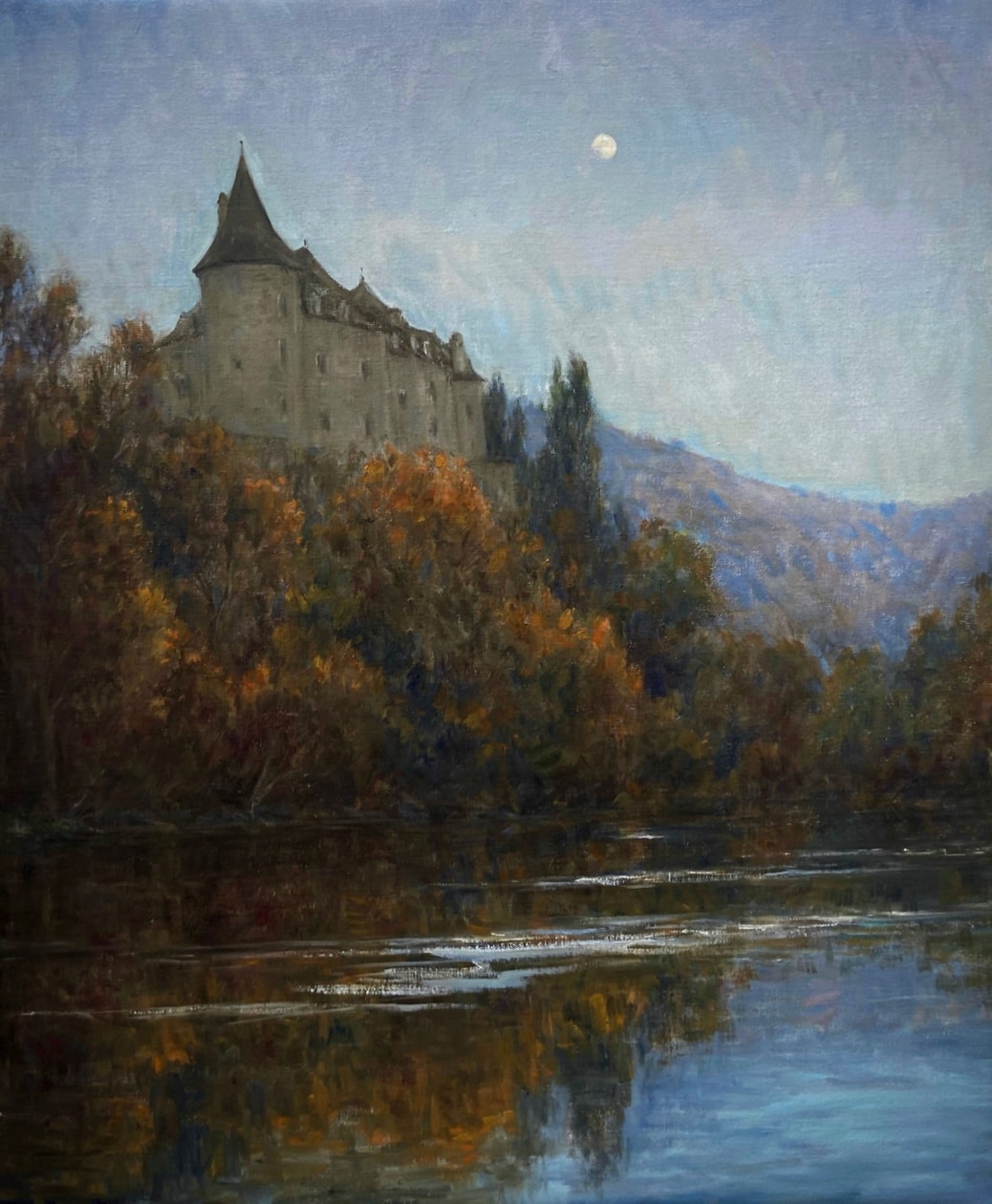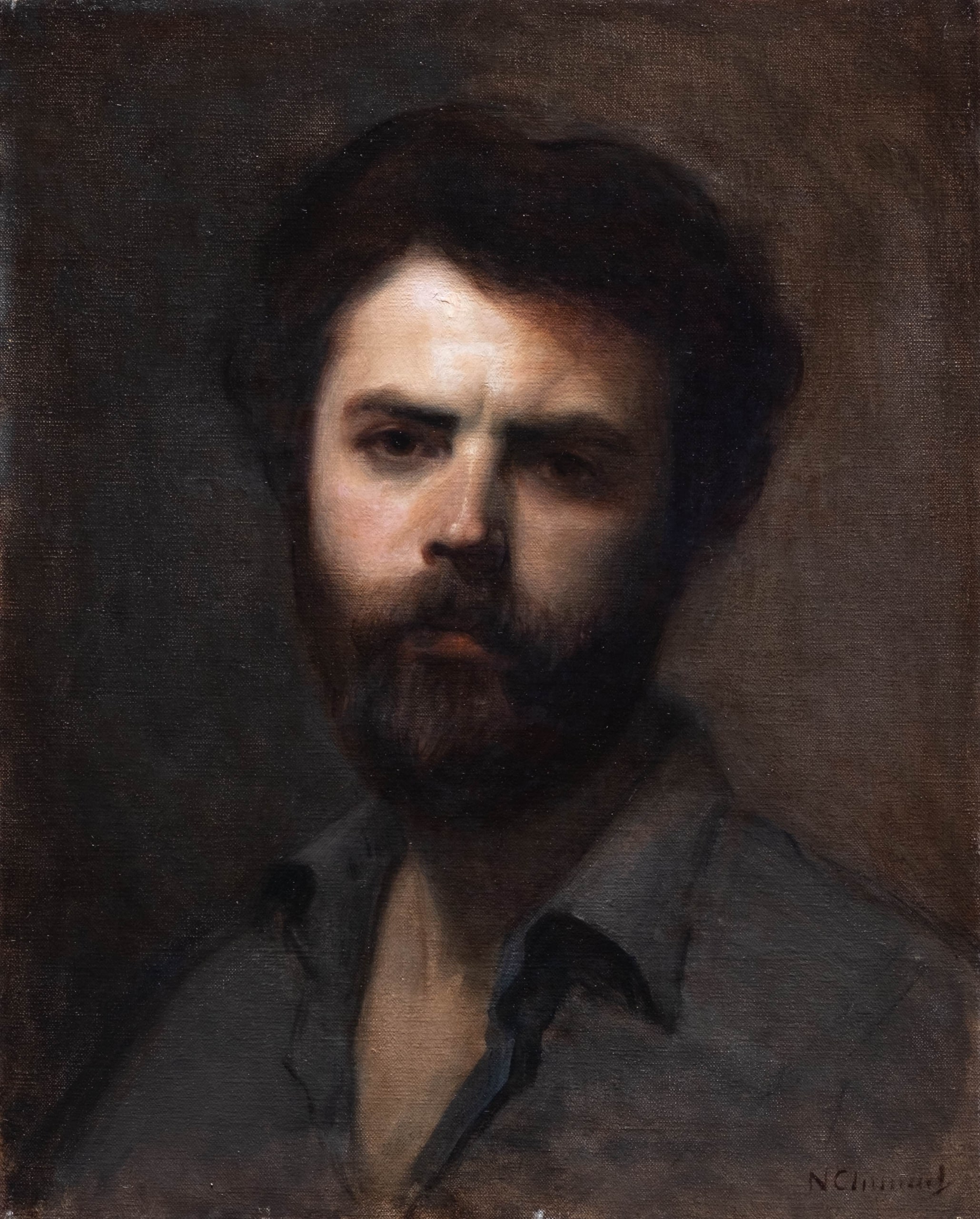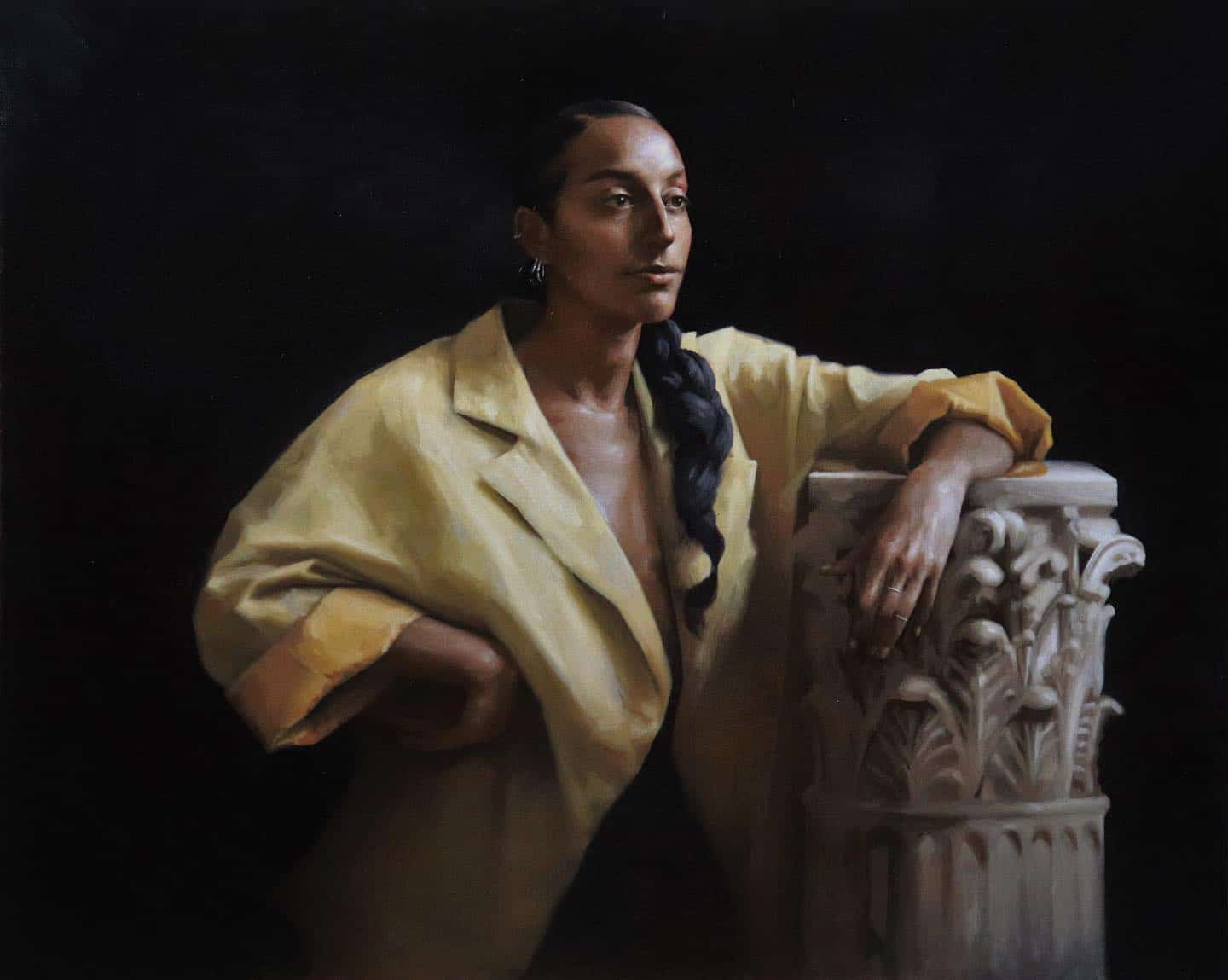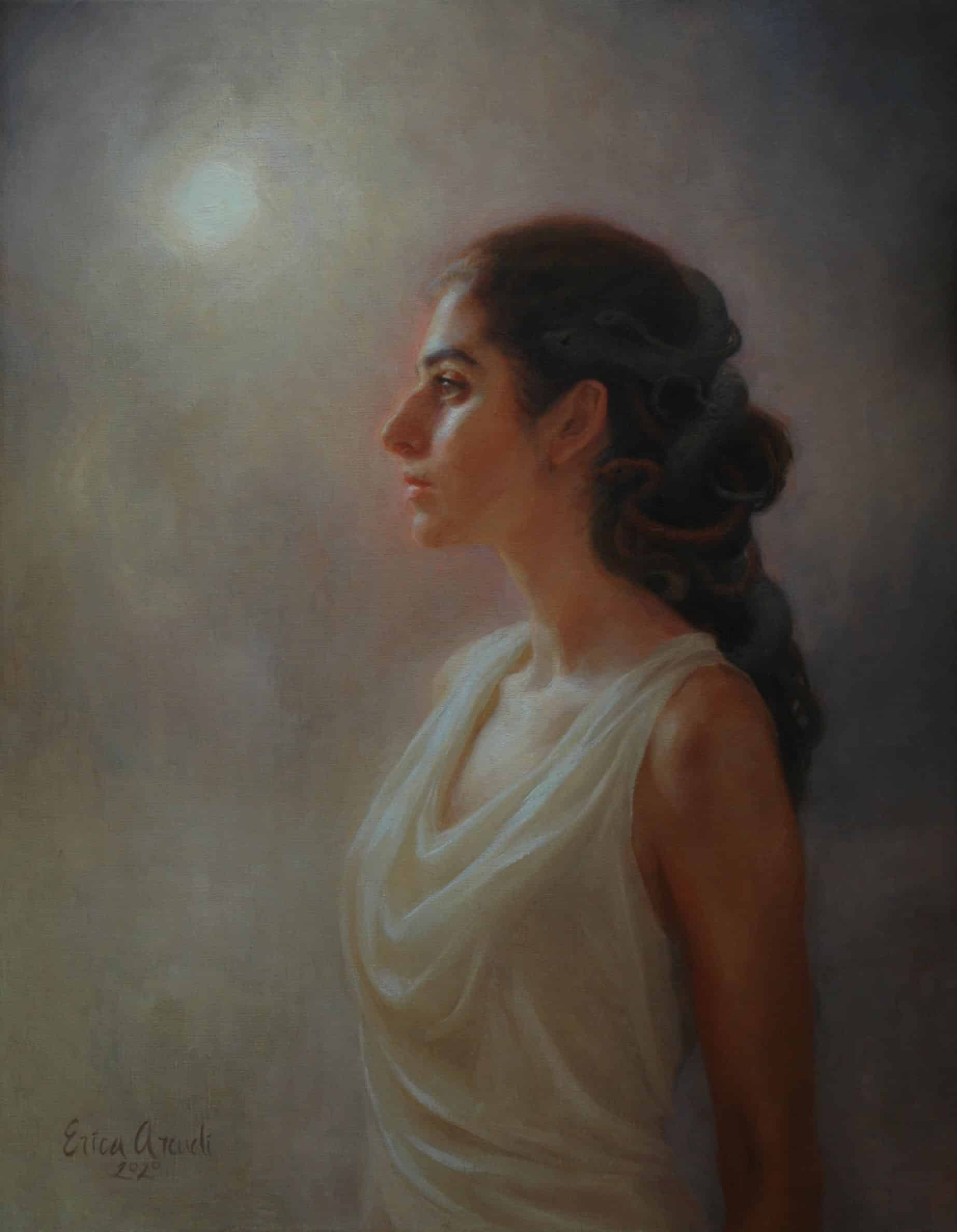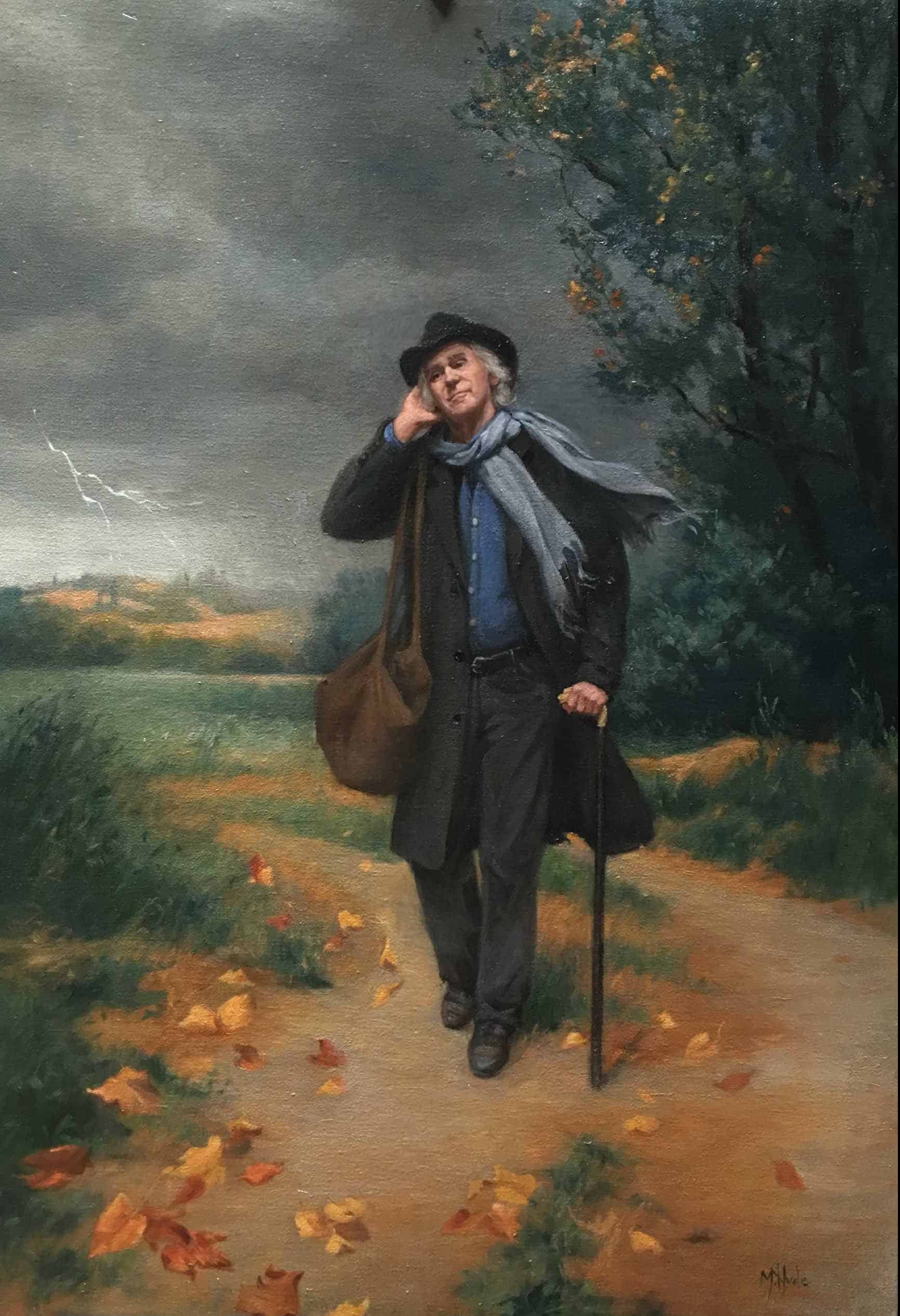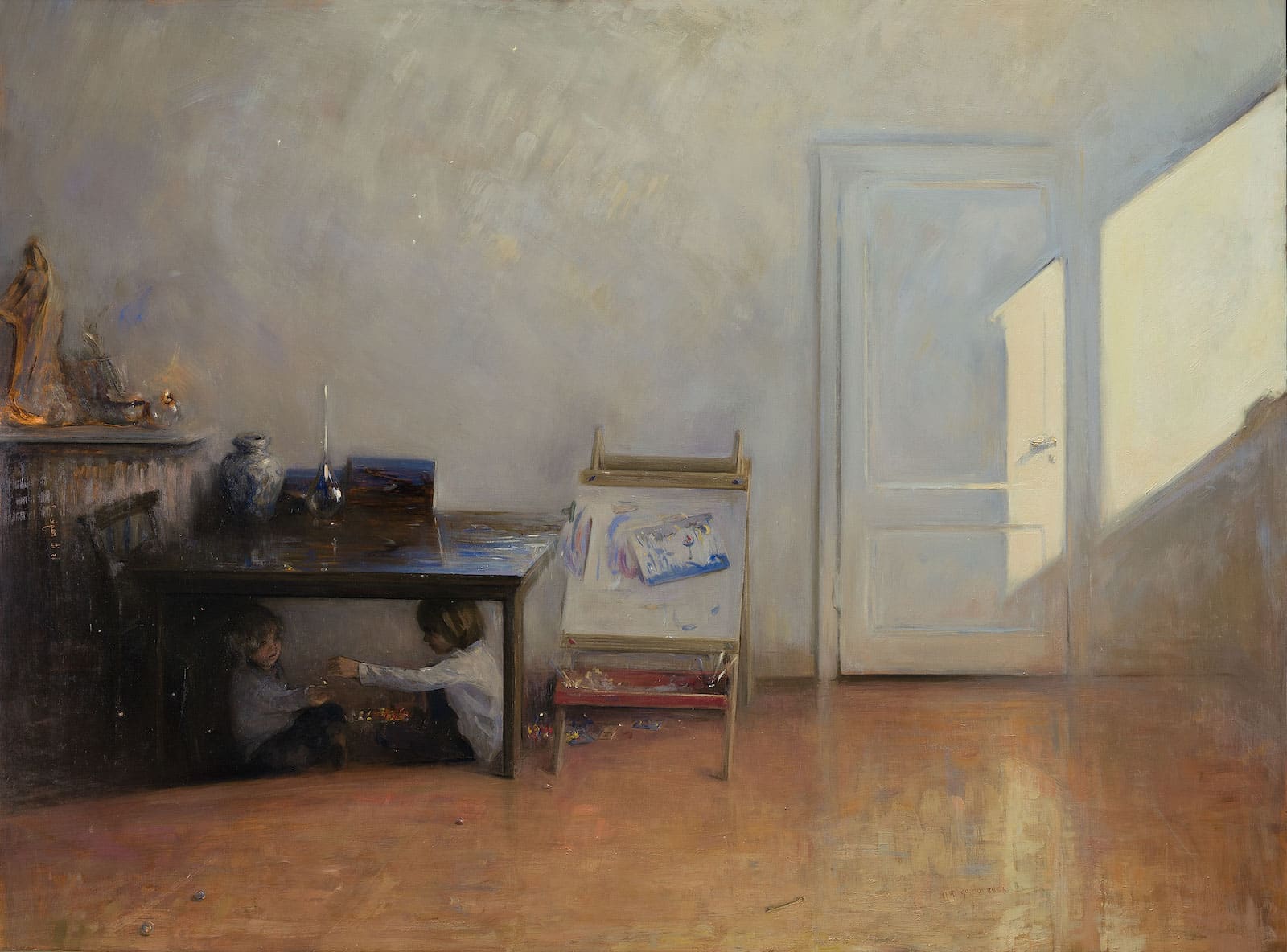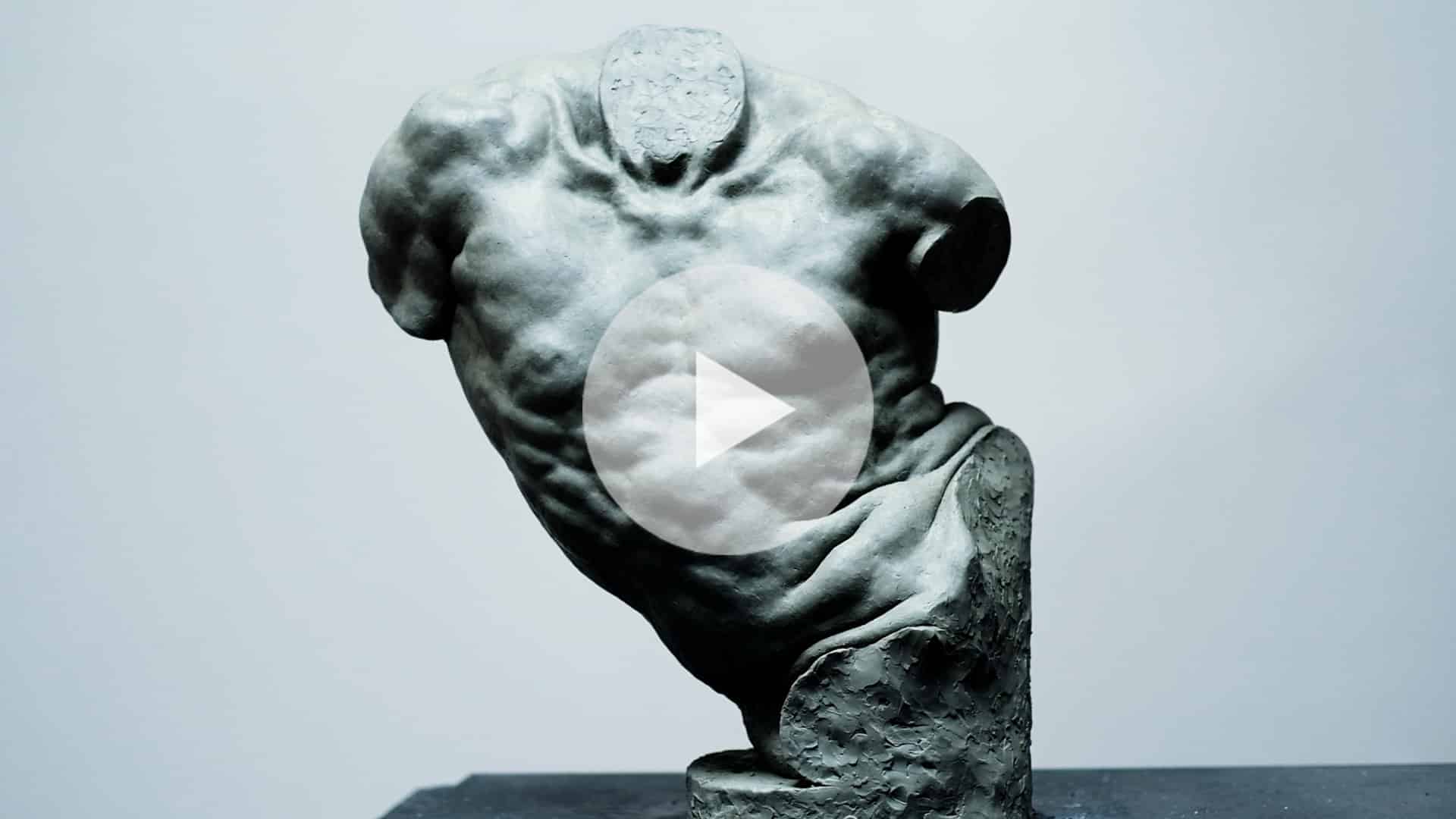August 18, 2022 / Spotlight on Art
Brass, Copper, Garlic by
Michael DeVore
One of the other great things about painting still life is that is humble and forgiving. You can set up a still life anywhere. It can be as simple or complex as you want.
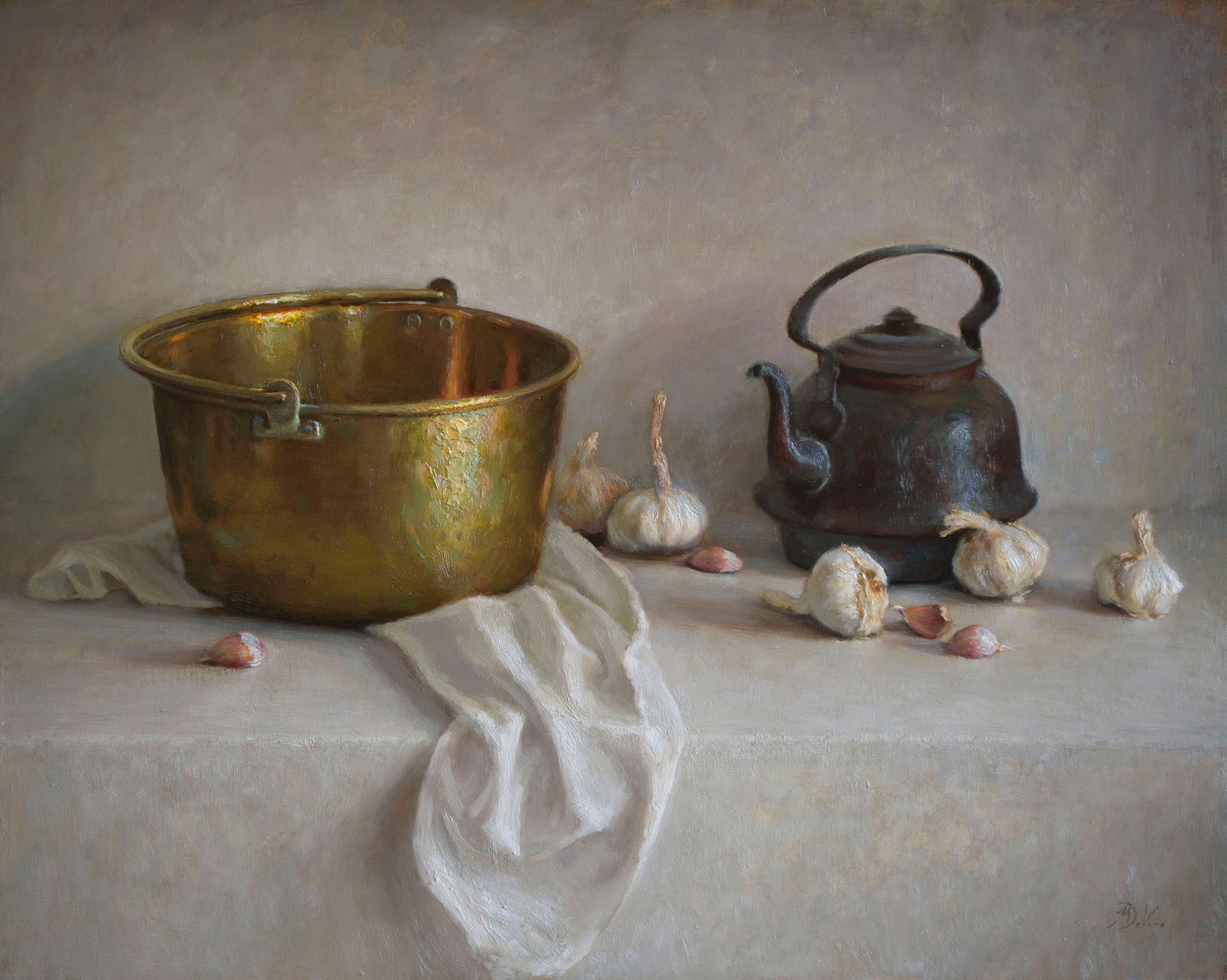
Michael DeVore, "Brass, Copper, Garlic", Oil on aluminum composite panel, 60 x 75 cm, 2021
Michael DeVore, The Florence Academy of Art graduate, and FAA Sweden Administrator and Workshop Director, has a varied body of work including portraits, landscape, and narrative scenes, but over the years his greatest output has been in the category of still life. In still lifes he finds beauty in simple compositions of ordinary objects and seeks to create work that strikes a harmonious balance that can affect an emotional response in the viewer. Below we learn all about the inspiration behind his fantastic painting Brass, Copper, Garlic, much about the process in selecting the specific items, the set-up, the paint application, and dive deep into the theoretical reasoning behind the many choices made in its creation from the artist himself. From the hunt across second-hand shops for a pot, to discussing the greater virtues of still life paintings in general, we hope you enjoy this piece!
“This painting was strongly influenced by Danish-American artist Emil Carlsen, who was known for his elegant still life paintings. Carlsen has been an influence on me ever since I was introduced to his work by one of my instructors, Jura Bedic, while I was a student in Florence. I didn’t have a particular passion for painting still life until I began doing them as part of The Florence Academy of Art’s curriculum. My first painting wasn’t very good and I really struggled with it, but the second and third paintings went much better and I was awakened to the possibilities that still life held. Still life presents unique opportunities to play around with the elements of painting in a way that can be easily controlled by the artist. When I am setting up the objects for a composition, I like to think of it as building a playground for the light to play on. I spend some time moving things around, taking things away, and putting things back until I have decided on a composition that feels both balanced and interesting.
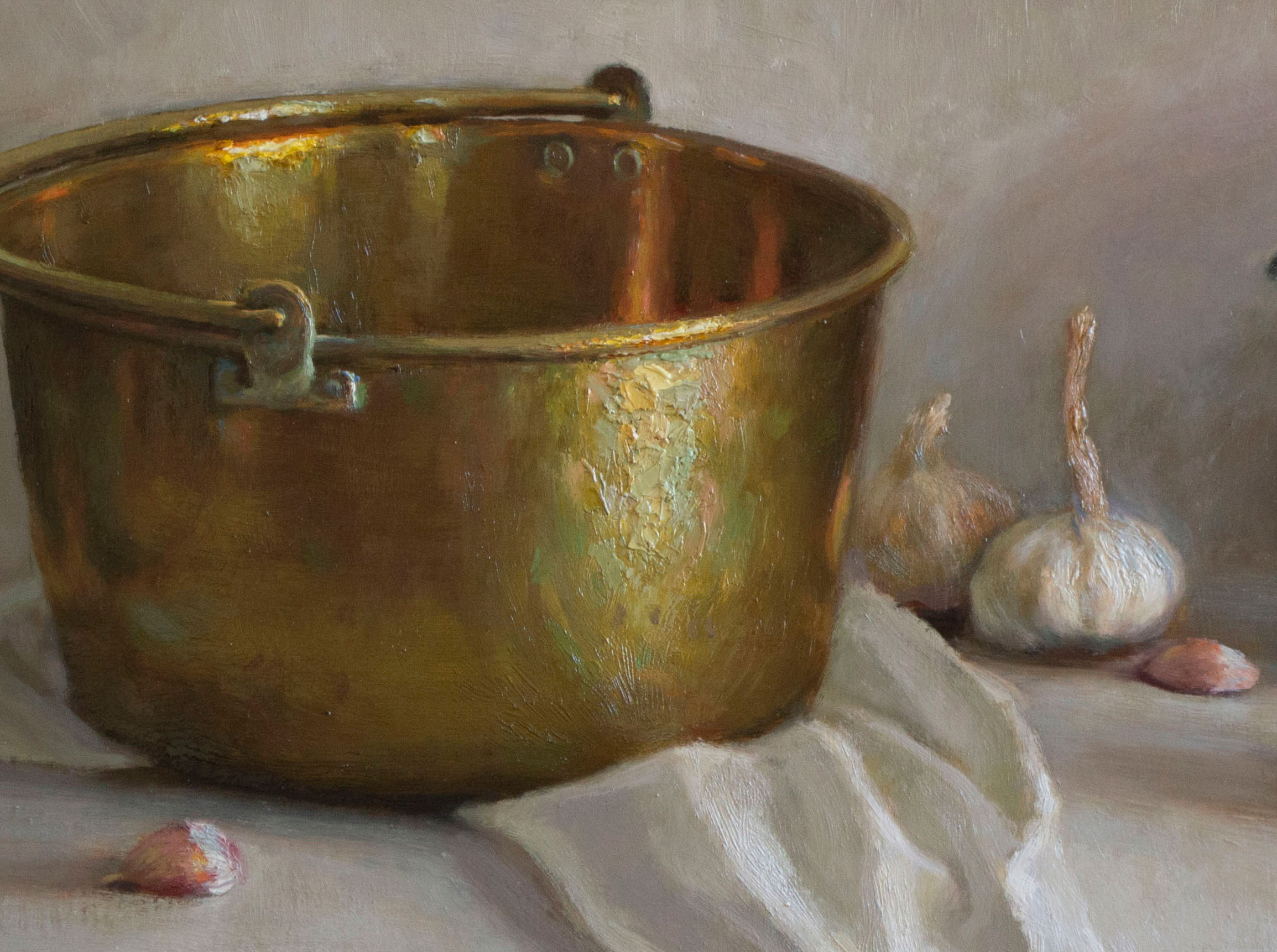
Detail of
Brass, Copper, Garlic
Detail of Brass, Copper, Garlic
I particularly enjoy using still life to explore the way light bounces off of various textures and surfaces so I am always on the lookout for objects that would be fun to paint. Sometimes it will be at an antique shop or even the produce aisle at the supermarket. One object that had been on my mind – after looking at lots of images of Carlsen’s work – was a large brass pot or kettle. I could see the thing in my mind but had not managed to find one at any of the usual shops or markets I frequent. Even searching online didn’t turn up any leads. Then one day when I took my kids to the candy store, I noticed a second hand shop next door and decided to stop in and see if they had anything interesting. As soon as I walked in I saw my pot! I immediately bought it (even though it was a bit overpriced) and began imagining the painting I was going to make with it. Very often I can visualize a painting in my mind, at least all the main elements, and then begin setting up the composition to see how the light will fall on it. I then begin to make changes based on how all the elements interact with each other.
Detail of
Brass, Copper, Garlic
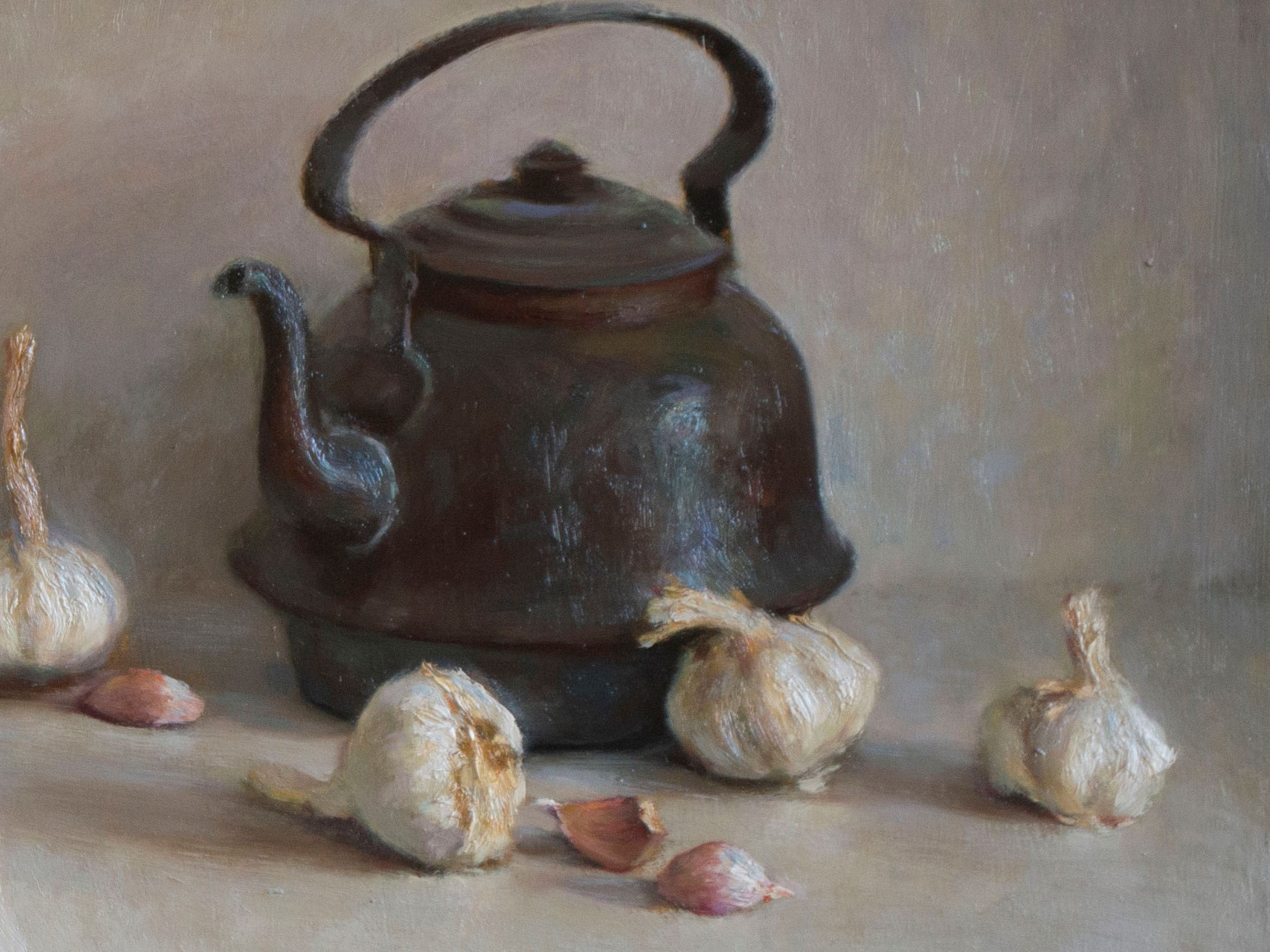
Detail of Brass, Copper, Garlic
For this painting I wanted the brass pot to be the focal point. I chose the dark copper tea kettle as a sort of counterweight. The brass pot is very colorful, with bright highlights and high contrast, so I felt that having something that was dark with low contrast would play well against it. The dullness of the tea kettle keeps it from being distracting but its silhouette against the light background creates interesting shapes. I wanted the rest of the composition to compliment and contract these darker objects so I chose to use light, off-white surroundings, which ironically are actually quite colorful. In order to make the yellow brass really pop, I used subtle use of complimentary purple tones. I also used garlics with purple and pink coloring which created a nice contrast to the yellow but didn’t stand out too strongly from the background colors. This creates movement throughout the painting without overwhelming the main subjects. The same goes for the white cloth. I was actively trying not to blend the colors too much in this painting in order to achieve a somewhat vibrating effect.
I tried to create contrast and areas of focus with the paint application. Some areas are painted quite thinly while other places such as the highlights were applied thickly with brush and palette knife. These thick impastos give the objects presence and the light gains a physicality. I want the viewer to feel the presence of the objects and the light and to see them as I did while painting them. I have also been trying to imbue my paintings with a sense of atmosphere- a certain feeling. There are many technical aspects to making a painting but it is ultimately in order to create something that evokes an emotional response from the viewer. I feel like that is the main objective with my paintings. I don’t know how successful I have been with that but it will always be the thing that I strive for.
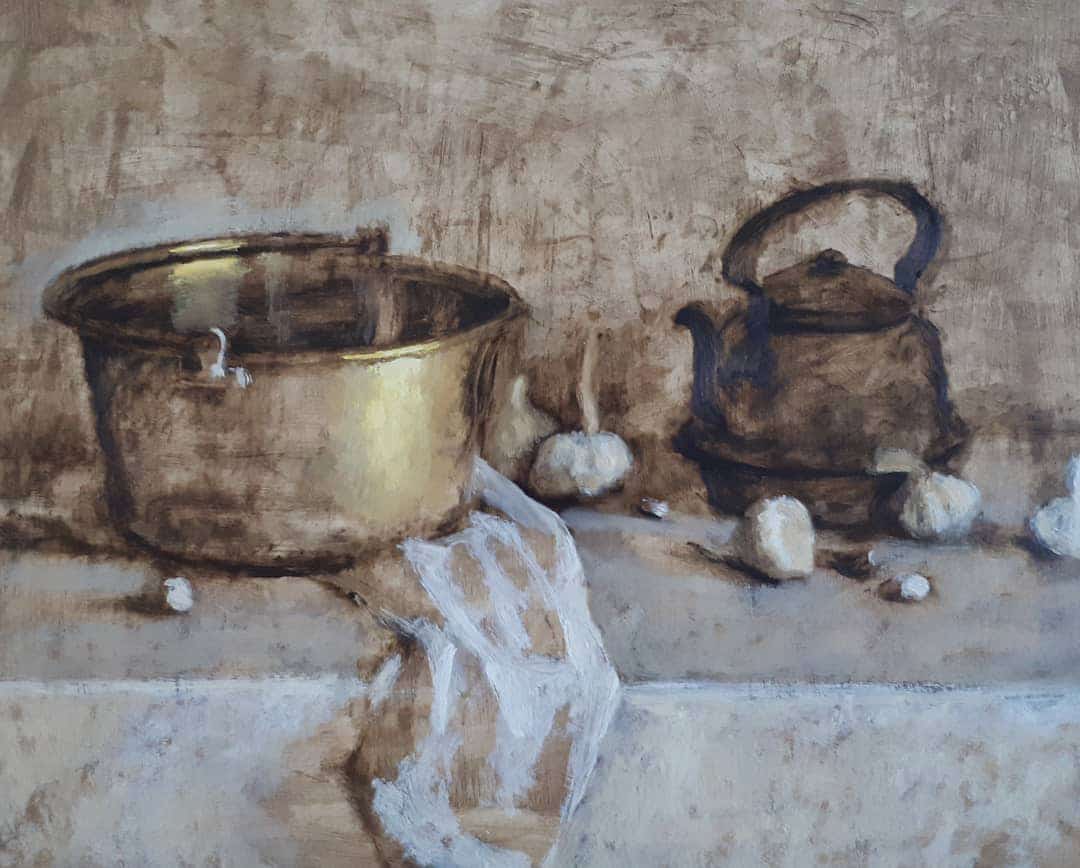
Progress of Brass, Copper, Garlic
I made this painting at home under natural light from the door leading to my backyard. It isn’t north light, but the sunshine doesn’t come directly in until late in the day. I don’t have a proper studio at the moment so this was done in a part of the living room now designated for painting. Painting from home presents some challenges when you have small children running around but I somehow found the time to eventually finish it. I can thank my very understanding and helpful spouse for that. Fortunately still life is humble and forgiving. You can set up a still life anywhere and it can be as simple or complex as you want.
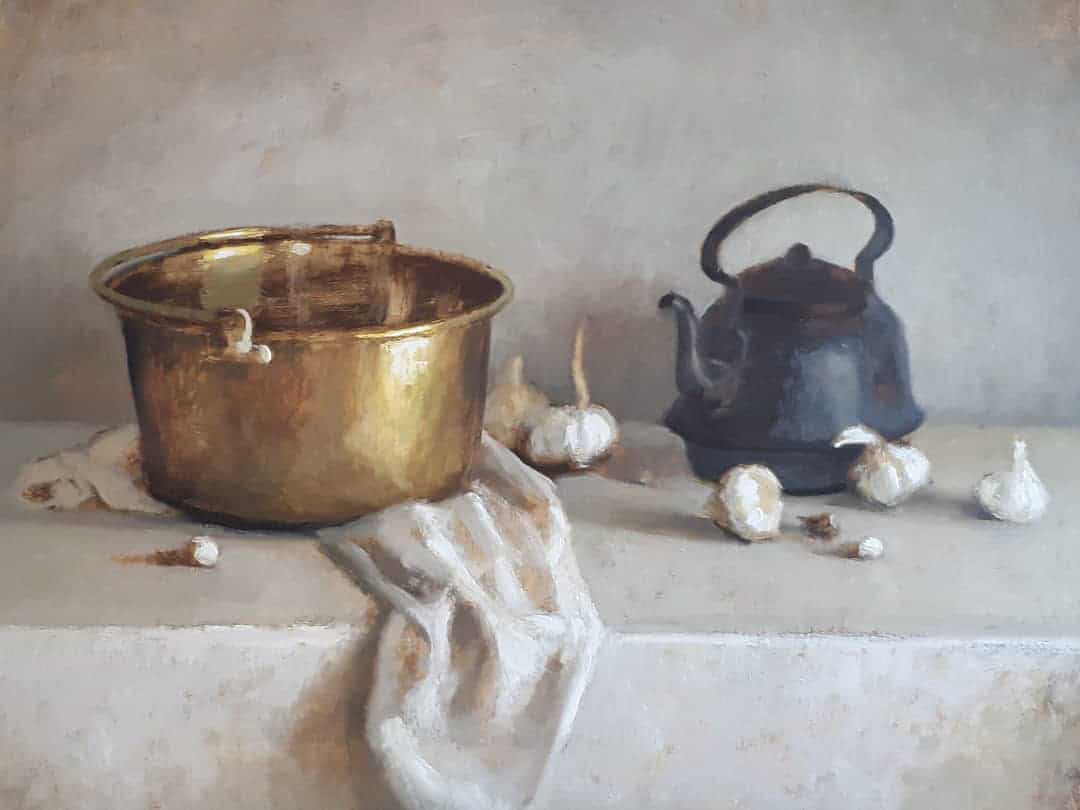
Progress of Brass, Copper, Garlic
You can make quick paintings of things that fade quickly like flowers and fruit or you can set up objects that can be painted for months. Even for things that spoil, they can usually be replaced. Working from home, I end up living with my still life set ups for weeks or months at a time. I see them every day, in different types of light as the hours pass. Each painting is a culmination of experience and observation. Like many people today, I spend too much of my time distracted and overly stimulated by technology, but painting still lifes forces me to slow down and really see things instead of scrolling past them. My mind is active, but calm, and I can appreciate the things that are right in front of me.”
– Michael DeVore
More about Michael DeVore
Michael DeVore (b.1982) is an artist trained in the classical realist tradition. Michael was born and raised in Oklahoma City, OK and from a young age he exhibited an interest and talent for drawing. With the encouragement and support of his family he won various competitions and awards in his home state before going on to major in art at Pepperdine University in Malibu, CA. There he met art history professor and director of the Frederick R. Weisman Museum, Michael Zakian, who would become involved in the realist art revival and encouraged him to pursue a more academic artistic education. After graduating in 2005, Michael still felt that his drawing and painting skills were lacking. Determined to learn the ways and techniques of the old masters, he went to Italy to attend The Florence Academy of Art. During his studies in Italy, Michael was honored to have one of his figure drawings added to the private collection of the academy’s student works. He met his future wife, fellow graduate Cecilia Thorell, while studying in Florence and the pair would go on to complete their final year of study at The Florence Academy’s campus in Sweden. After living for a time in Colorado, they would return to Sweden where Michael would join the faculty of The Florence Academy as the administrator and workshop director for the Swedish branch.



